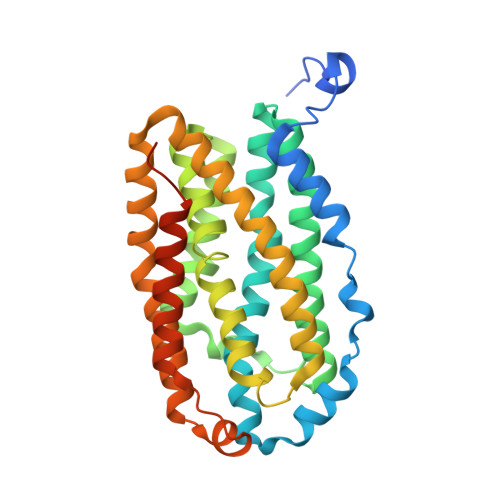Key Structural Motifs Balance Metal Binding and Oxidative Reactivity in a Heterobimetallic Mn/Fe Protein.
Kisgeropoulos, E.C., Griese, J.J., Smith, Z.R., Branca, R.M.M., Schneider, C.R., Hogbom, M., Shafaat, H.S.(2020) J Am Chem Soc 142: 5338-5354
- PubMed: 32062969
- DOI: https://doi.org/10.1021/jacs.0c00333
- Primary Citation of Related Structures:
6QJV, 6QK0, 6QK1, 6QK2 - PubMed Abstract:
Heterobimetallic Mn/Fe proteins represent a new cofactor paradigm in bioinorganic chemistry and pose countless outstanding questions. The assembly of the active site defies common chemical convention by contradicting the Irving-Williams series, while the scope of reactivity remains unexplored. In this work, the assembly and C-H bond activation process in the Mn/Fe R2-like ligand-binding oxidase (R2lox) protein is investigated using a suite of biophysical techniques, including time-resolved optical spectroscopy, global kinetic modeling, X-ray crystallography, electron paramagnetic resonance spectroscopy, protein electrochemistry, and mass spectrometry. Selective metal binding is found to be under thermodynamic control, with the binding sites within the apo-protein exhibiting greater Mn II affinity than Fe II affinity. The comprehensive analysis of structure and reactivity of wild-type R2lox and targeted primary and secondary sphere mutants indicate that the efficiency of C-H bond activation directly correlates with the Mn/Fe cofactor reduction potentials and is inversely related to divalent metal binding affinity. These findings suggest the R2lox active site is precisely tuned for achieving both selective heterobimetallic binding and high levels of reactivity and offer a mechanism to examine the means by which proteins achieve appropriate metal incorporation.
- Department of Biochemistry and Biophysics, Stockholm University, SE-106 91 Stockholm, Sweden.
Organizational Affiliation:



















